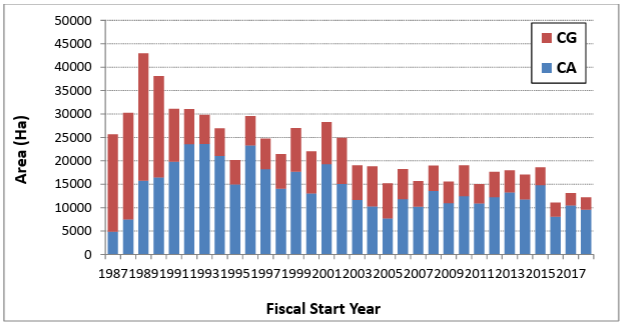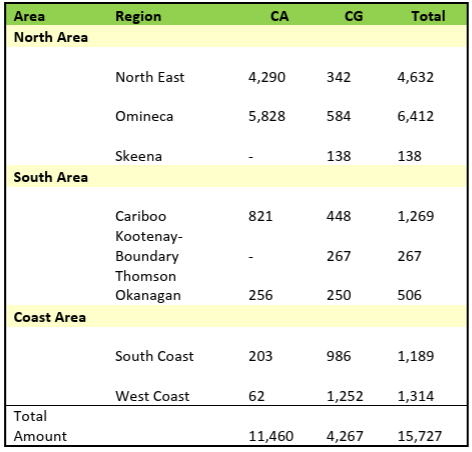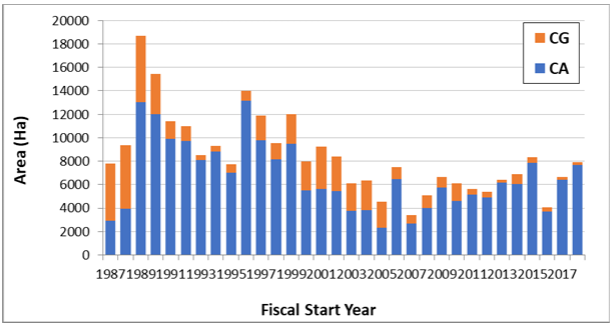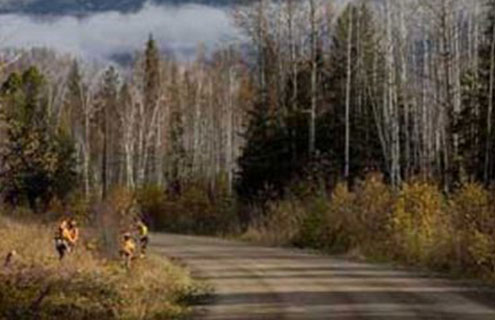Conservation
Herbicide Use in British Columbia
Herbicide Use in British Columbia’s Forest Industry and its Effect on Moose Populations
By: Neil Findlay, RPF
Introduction
Recent controversy on the use of herbicides in British Columbia’s forest industry has led many to believe that herbicide use is the primary cause of the decline of moose populations in the Province. As a Registered Professional Forester and Board member of BC Interior SCI, I have attempted to provide some background information on the subject and offer my opinion on a targeted solution to the issue.
Background
The forest industry uses herbicides to reduce brush competition in managed (second-growth) stands. When forest companies harvest an area of Crown land in BC, section 29 of the Forest and Range Practices Act requires them to establish a Free Growing Stand. The definition of a Free Growing Stand is ‘…a stand of healthy trees of a commercially valuable species, the growth of which is not impeded by competition from plants, shrubs or other trees’. In order to achieve this requirement, the forest companies may choose to use herbicides. Some application is done aerially (usually helicopter) and some is done by ground-based means (usually backpack sprayer). The significance of ‘commercially valuable’ is not to be understated when discussing this topic and is a leading reason deciduous tree species are treated with herbicides (rightly or wrongly).
Use of herbicides in the forest industry has created controversy for many years in BC, but recently has reached new heights as exemplified by the Stop The Spray B.C. group. This group has noted the impact herbicide use can have on the diversity of second-growth forests and thus the potential for impacts such as spread rate of wildfire and forage availability for species such as moose. Many in the hunting and conservation community have taken this a step further and appear to blame herbicide use by the forest industry as the primary reason for decline in moose populations in the Province.
The Data
As a forester and a hunter/conservationist, I have been following the herbicide use debate with much interest. I have done research of my own in the past when tasked with supervising herbicide application contracts and the requirement to hold a pesticide applicator’s licence. The controversial nature of the topic led to the publication Glyphosate Use in BC – An Update in the BC Forest Professional magazine, spring 2020 edition by Neil Hughes, RPF (Resource Practices Branch, MoFLNRORD). The data Mr. Hughes presented in his article was very interesting. I reached out to Mr. Hughes for this data and permission to reproduce it.
Glyphosate is the most widely-used herbicide in the forest industry. The follow graphs are the most telling representation of the overall levels of glyphosate use in BC:

CG = ground-based applications. CA = aerial-based applications
This is a somewhat simplified snapshot, but does show that herbicide use has declined quite significantly over time. Regional use is also interesting. The following table shows the average area of herbicide use in the last 10 years by Forest Region:

The following graph shows the area treated by herbicide since 1987 in the Omenica Forest Region. It also shows overall, reduced use of herbicides.

Conclusion
It is interesting to me that the highest levels of herbicide use through the late 80’s, the 90’s and into early 2000’s also coincided with a time when moose populations were very high through much of BC. As noted, this is a very simplified look at herbicide use but does lead me to believe that herbicide use is unlikely the major cause of the decline of moose populations, at least when looked at in isolation. In my opinion the overall decline in moose populations in BC is a result of a number of factors coming together; an effect of cumulative impact. The major decline in moose populations has occurred in the last 10 years which coincides with the huge increase in harvested area and roads constructed to deal with the mountain pine beetle epidemic in the Interior of BC. This reduction in cover and the dramatic increase in road density resulted in much higher hunter and predator mortality of moose. These are the primary causes for the reduction in moose populations across much of BC in my opinion. Does this mean that studying the effects and monitoring herbicide use in BC in not important? Not at all. The Stop The Spray B.C. group has raised legitimate concerns and have been instrumental in elevating the topic and raising awareness. I believe herbicide use can have significant negative effects on moose at a localized scale, particularly in winter range where deciduous trees are critical for forage. My suggestion when it relates to herbicide use and its effects on moose is to strive for no broadcast spraying in critical moose winter range. This way, the forest companies have some flexibility in achieving their requirements but must give careful consideration when operating in critical moose winter range. Herbicides are not ‘all good’ or ‘all bad’; they are simply a tool and like all tools can be used effectively and safely given due diligence.


